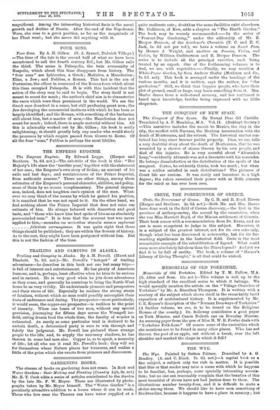NAVAL WARS IN THE BALTIC.
Naval Wars in the Baltic. By R. C. Anderson. (C. Gilbert Wood. 15s.)—Few students of history, it is probable, quite realise how stubborn and how frequent was the fighting which went on between the Swedes, Danes, and Russians in the sixteenth, seventeenth, and eighteenth centuries. Between 1680 and 1720 there was in particular an almost continuous struggle. The con- figuration of the Baltic °oast, the conditions of weather which prevail there, and the dangerous shoals make the sea a fine nursery for seamen. Mr. Anderson has given a full and pains- taki g account of these Baltic battles. He describes the tactics and the fighting as clearly as he can, and abstains from comment. Besides the losses in fighting, thoro was always a terrible waste from stranding and wrecking. " Missed stays and went aground " is a common entry in the battle reoords of the time. Not a few picturesque stories occur. In 1704, for instance, one Psilander, a Swede in command of a fifty-gun battleship, met an English squadron of eight battleships of equal size and a frigate. He refused to strike his flag, and fought for four hours and a half before he • surrendered. It was not war, but it was certainly magnificent. Among the interesting historical facts is the naval growth and decline of Russia. After the end of the Napoleonic Wars, she rose to a great position, as far as the magnitude of her Fleet went ; but she never did anything with it.























































 Previous page
Previous page